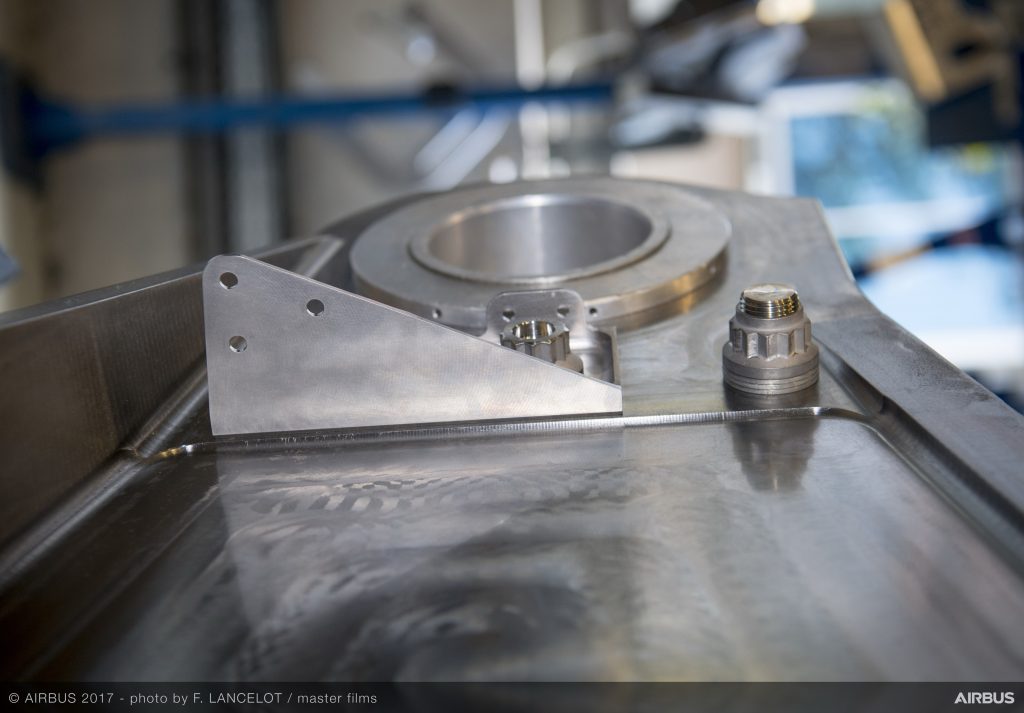Airbus has completed the installation of a 3D printed titanium bracket on an in-series production A350 XWB aircraft.
Though in service since January 2015 with 1,000 3D printed parts on board, the A350 bracket marks Airbus’ expansion of its 3D printed part catalog for the plane, showing that additive manufacturing for production continues to make progress.

3D printing is not a gimmick
The 3D printed bracket is part of the aircraft pylon, the segment of a plane attaching jet engines to the wings.
Historically, Airbus has used Concept Laser M2 cusing machines to produce its metal additive parts. As of December 2016, the company has also been developing Sciaky’s electron beam additive manufacturing (EBAM) for use in large, flight-integral parts.
In ongoing improvements to the double-deck A380 plane, Airbus worked with Swiss industrial and mechanical engineering company Liebherr and the Chemnitz University of Technology to 3D print the spoiler actuator valve block inside the wing.
Ben Sandilands, transport specialist and editor of Plane Talking, writes that the new 3D printed titanium bracket from Airbus is “a note to those who think 3D printing is a gimmick.”
As 3D Printing Industry readers will already be aware the use of additive manufacturing for the production of aerospace components has a long history.
One example being the F-15 Pylon Rib made by Airbus rival, Boeing. Entering service in 2003, Boeing’s Leo Christodoulou, Director of Structures and Materials, Enterprise Operations and Technology, describes the titanium components as, “the biggest success story that exists”.

Additive manufacturing in aerospace
The A350 XWB plane is Airbus’ competition for Boeing’s 787 and 777 models.
Together with Dassault Systèmes, Boeing has created a digital twin of the 777 aircraft, aiding in the further development of the company’s long-range plane that has been in service since 1994.
The GE9X engine, containing components made on EOS additive manufacturing machines, is also set for installation in the forthcoming 777x upgrade. For the interior of the A350, Airbus has standardized the use of Stratasys ULTEM material, and it renewed a $15 million materials contract with Hexcel Corp in October 2016.
The aerospace sector’s continued commitment to additive manufacturing will ensure that the industry adapts to the shifting commercial landscape. One example is the recent news that Boeing has set up a new avionics group to make aircraft controls and electronics. The new division is in competition with existing aerospace suppliers including Rockwell Collins Inc, Honeywell International Inc and United Technologies Corp.
Never miss a story. Sign up to the free 3D Printing Industry newsletter, like us on Facebook and follow us on Twitter.
Register early for 3D printing jobs updates here.
Featured image shows 3D printed titanium bracket assembly. Photo by F. Lancelot/Airbus.


